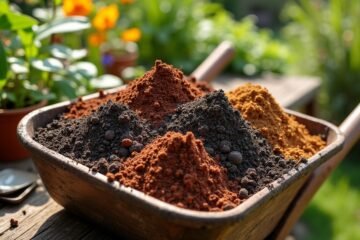To keep your raised beds thriving, choose a sunny spot that gets lots of daylight. Mix compost into your soil like a chef adding spices! Water early, and use mulch to keep that precious moisture in. Don’t let weeds crash your gardening party; hand pull or lay down barriers. Finally, invite beneficial bugs to the scene—think of them as your garden’s bouncers! Want to learn more about how to keep your green oasis flourishing?
Choosing the Right Location
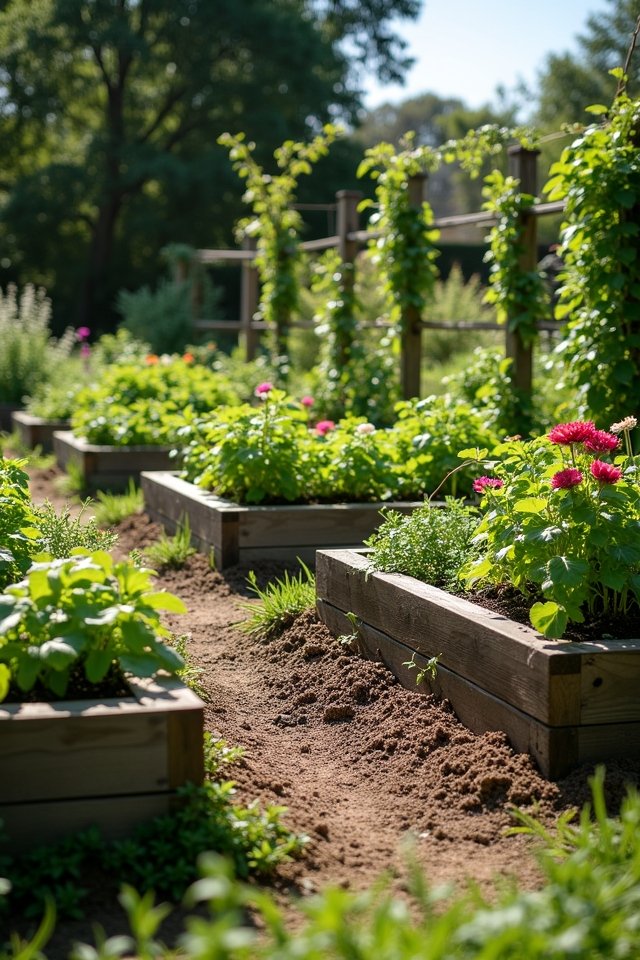
When it comes to choosing the right location for your raised beds, think of it like picking the perfect spot for a picnic—sunshine, shade, and a dash of good company make all the difference! You want to find a sunny area that gets at least six hours of sunlight exposure daily. Not only will your plants bask in the warmth, but they’ll also thrive! Remember, good drainage is essential, too; consider sloped areas where water naturally flows away, keeping your roots happy. Avoid low spots where puddles can form, turning your garden into an unwanted water park! Think of it this way: a well-chosen spot is like an inviting stage for your garden’s spectacular show. So get out there and scout!
Soil Preparation and Maintenance
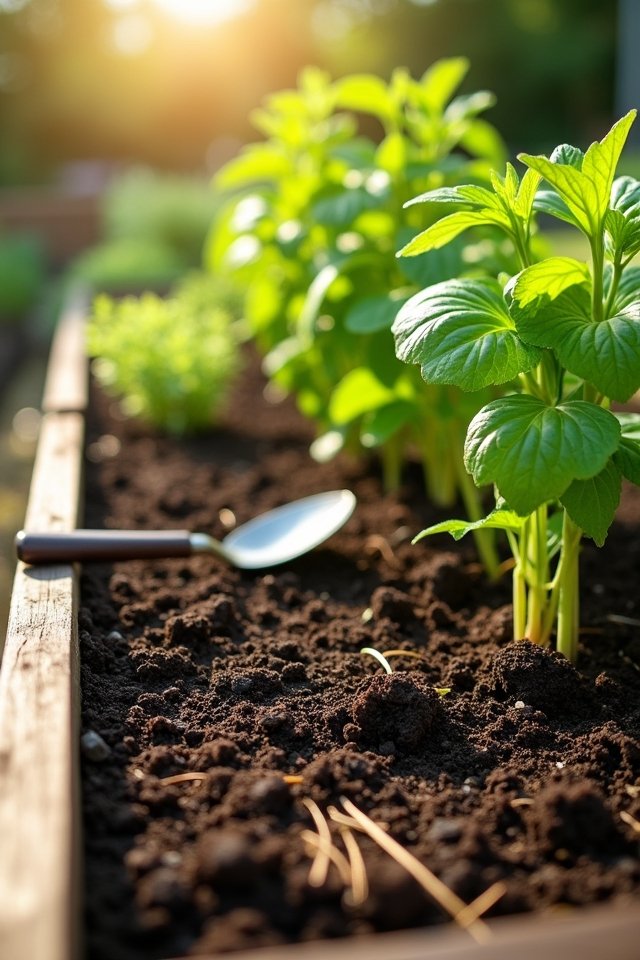
Soil’s like the cozy blanket wrapping your plants in warmth and nutrients, and it deserves your attention! To keep that blanket in top shape, immerse yourself in soil amendments. Mixing in compost or well-rotted manure can supercharge your soil’s health. Think of it as giving your plants a gourmet meal!
For effective nutrient management, consider testing your soil pH and nutrient levels. It’s like putting on your plants’ favorite Spotify playlist—tailored just for them. As seasons change, remember to refresh your soil—remove any old plant debris and add fresh amendments to keep that nutrient balance in check. With a little love and care, your raised beds will be thriving like a well-tended garden party! Ready, set, grow!
Regular Watering Practices
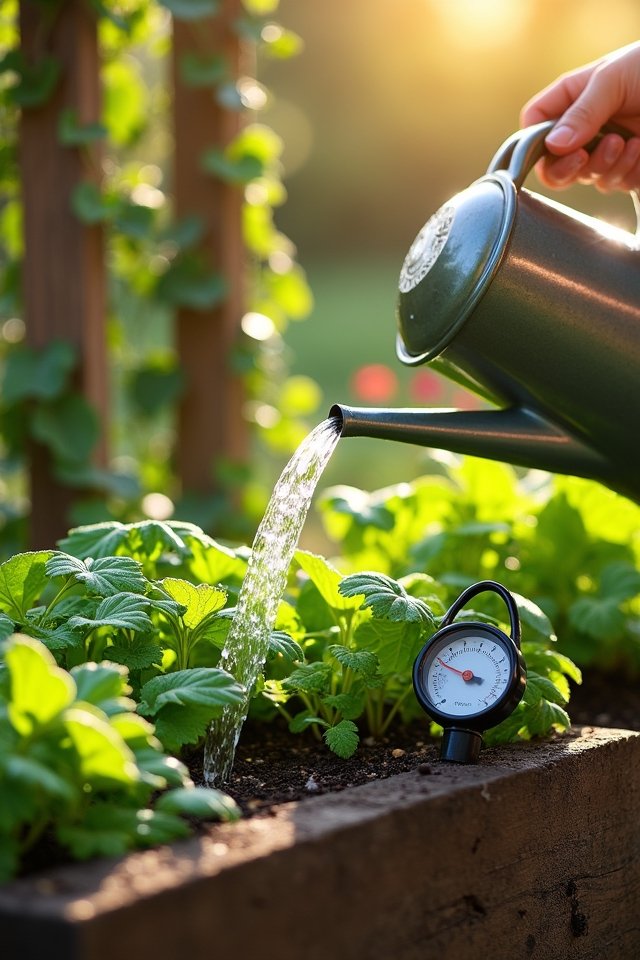
Even if you’ve got the best soil mix in the world, it won’t do your plants much good without regular watering! To keep your raised bed thriving, consider these innovative watering practices:
- Drip irrigation: This gem allows water to drip directly at the roots, making every drop count!
- Moisture retention: Use mulch to keep that precious moisture in the soil, like a cozy blanket on a chilly night!
- Timing is everything: Water early in the morning or late in the evening to minimize evaporation—just like you wouldn’t sit in the sun during peak hours!
Implementing Crop Rotation
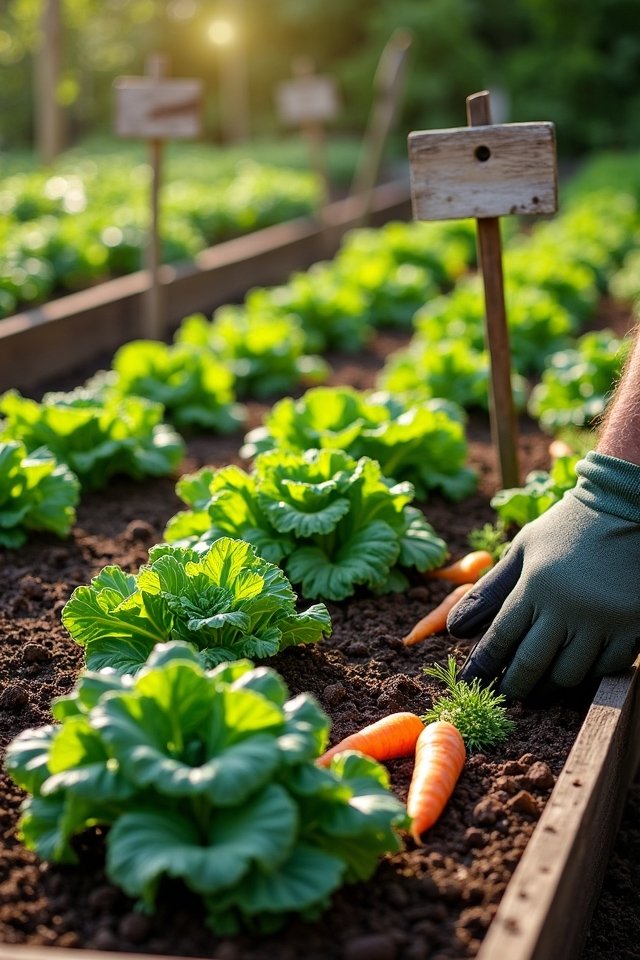
Implementing crop rotation isn’t just a fancy farming term—it’s your garden’s secret weapon to staying healthy and productive! By swapping out your plants each season, you boost crop diversity and keep pests guessing. For instance, if you grow tomatoes one year, try beans the next. This not only gives your plants a nutrient balance but also gives the soil a much-needed breather. Imagine a dance of plants, each taking turns leading—each brings unique needs to the party! Next season, your plants will thank you with bountiful yields, while you’ll smile at the lush, vibrant colors rising from your beds. So, let’s jump on this rotating bandwagon and watch your garden flourish like never before! Ready to spin those veggies?
Weeding Techniques and Prevention
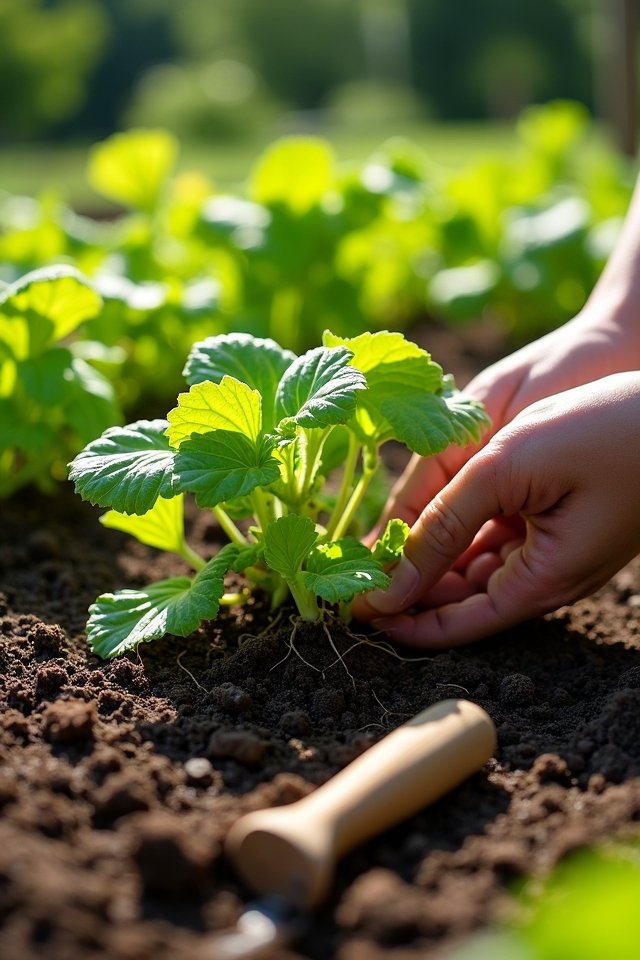
While you might think weeding is just a boring chore, it’s actually the secret to keeping your garden thriving! Think of it like giving your plants a spa day; they’ll love you for it! To make weeding exciting, try these techniques:
- Hand Weeding: Get your hands in the dirt! It’s therapeutic and lets you connect with your plants more intimately.
- Weed Barriers: Using fabric or mulch can help prevent pesky weeds from sprouting. It’s like putting a cozy blanket over your soil!
- Regular Patrols: Check your beds weekly. The earlier you spot weeds, the easier it is to conquer them.
Stay proactive, and your garden will flourish—think of it as your little green kingdom! 🌱
Pest Management Strategies
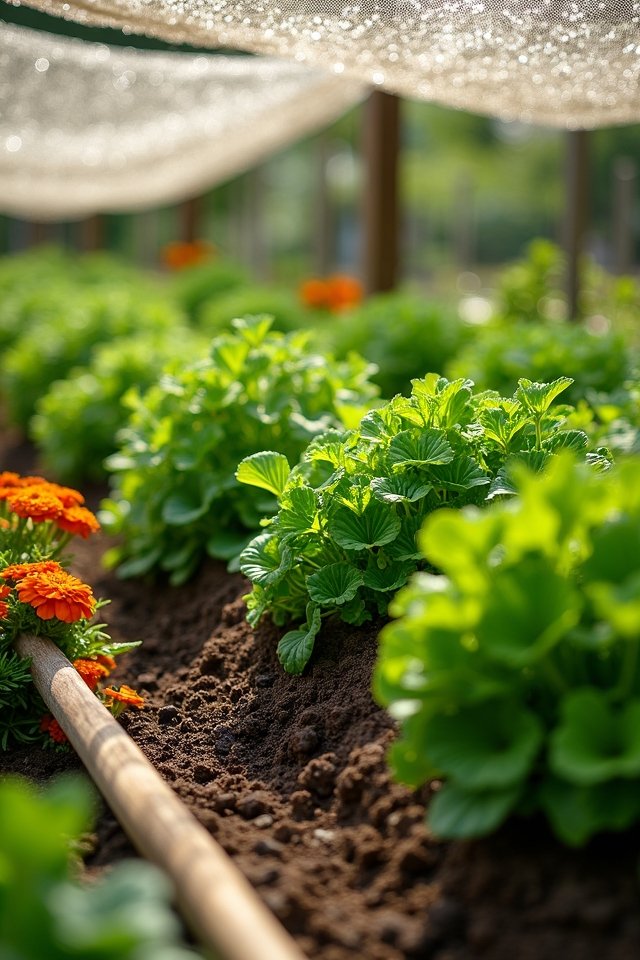
When you step out into your garden, it can feel fantastic to see your plants thriving, but pests can quickly turn that paradise into a nightmare! To keep those pesky critters at bay, consider inviting natural predators, like ladybugs and lacewings, to your soil—they’re nature’s tiny bodyguards! You can also try companion planting; for instance, pair marigolds with your tomatoes. Those cheerful flowers emit scents that confuse pesky insects.
And don’t forget—regularly inspecting your plants helps catch issues early! Use a gentle soap solution if pests sneak in, but be careful; you don’t want to harm your allies! It’s all about teamwork in your little ecosystem! So, get creative and watch your garden flourish with innovation!
Seasonal Planting Tips
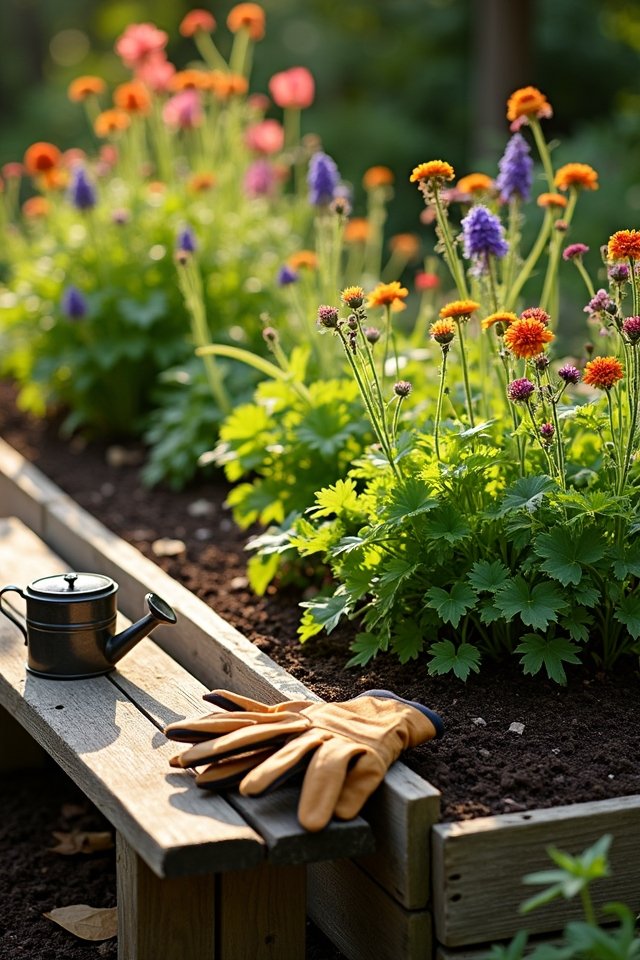
As you flip over your garden calendar and feel the excitement of a new season approaching, planning your seasonal planting can feel like preparing for a grand adventure! To maximize your garden’s potential, try these innovative strategies:
- Intercropping benefits – Grow fast-maturing crops alongside slower ones, creating a lush layer of green and using space wisely!
- Companion planting – Pair plants like tomatoes with basil to ward off pests and boost flavor. It’s a garden team-up!
- Rotate crops – Change locations each season to prevent soil depletion and pests from setting up camp.
Mulching Benefits and Methods
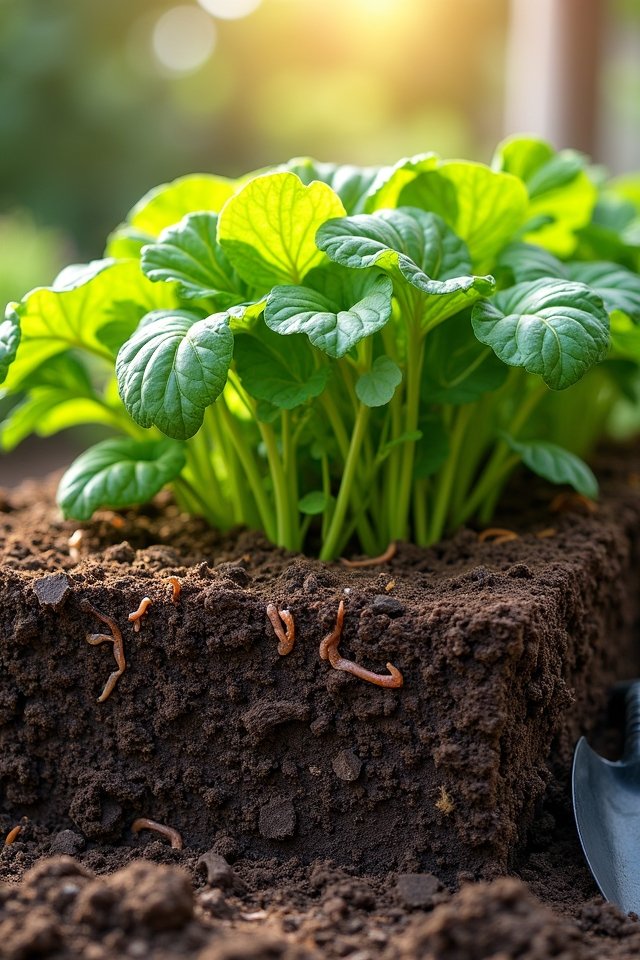
After you’ve set up your seasonal planting plan, don’t forget about one of the garden’s hidden heroes—mulch! This magical blanket does wonders for your raised beds. It helps retain moisture, suppress pesky weeds, and add nutrients to the soil. Imagine how a cozy sweater keeps you warm; that’s what mulch types like straw, wood chips, or shredded leaves do for your plants!
To nail that mulch application, spread it evenly across the soil surface, aiming for a 2-3 inch layer. Don’t let it touch your plant stems—like personal space in a crowded elevator! With the right mulch, your garden’s not just surviving; it’s thriving! So, welcome your garden’s secret weapon and watch it flourish! 🌱
Winterizing Your Raised Beds
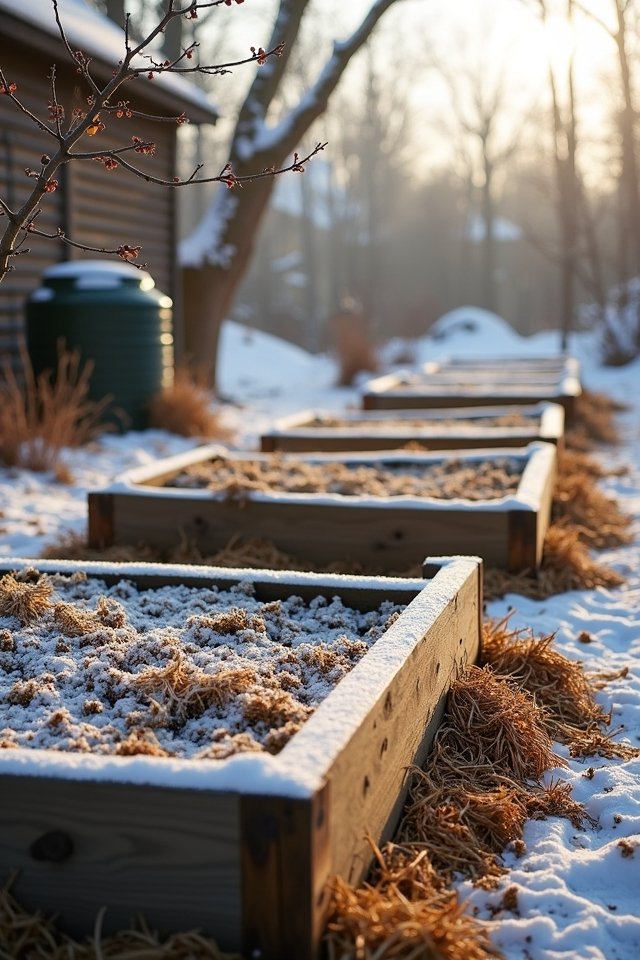
Before the first frost takes your garden by surprise, let’s explore winterizing your raised beds! Winter can be tough on your plants, but with a little prep, you’ll be ready! Here are three helpful tips to guarantee frost protection and a thriving garden come spring:
- Cover Crops: Planting cover crops, like clover or rye, will protect your soil and add nutrients as they decompose!
- Mulch: A thick layer of mulch keeps the soil cozy and reduces frost damage—think of it as a warm winter blanket!
- Protective Covers: Use row covers or cold frames to shield sensitive plants from those chill winds!
Frequently Asked Questions
How Deep Should My Raised Bed Be for Vegetables?
For healthy vegetable growth, aim for a raised bed depth of at least 12 to 18 inches! This gives roots plenty of room to wiggle and stretch, just like a dancer at a party! If you’re growing deep-rooted veggies like carrots or potatoes, go deeper—up to 24 inches. Just imagine those lush greens flourishing! Taller beds also make gardening a breeze, letting you skip the backaches of bending down. Happy gardening!
What Materials Can I Use for Building Raised Beds?
When you’re building raised beds, you’ve got exciting choices! For wood, consider cedar or redwood—they’re durable and smell divine! Metal options like galvanized steel are sleek and modern, plus they last ages. Imagine your garden buzzing with life! Just keep in mind, whether you pick the rustic charm of wood or the crisp coolness of metal, each material adds its own flair and character to your gardening masterpiece. Happy building!
Can I Plant Flowers in Raised Vegetable Beds?
Why limit yourself? You can absolutely plant flowers in your raised vegetable beds! Think of flower varieties like zinnias or marigolds as your garden’s colorful cheerleaders. When choosing planting techniques, sprinkle them in with your veggies for a vibrant spectacle. Just imagine the delightful contrast—lush greens paired with bright petals! Just remember, they’ll need sun and care too. So, why not make your beds a beautiful patchwork of blooms and bounty?
How Often Should I Test My Soil’s Ph?
You should test your soil’s pH levels at least once a year. Think of it as a mini health check for your garden! Just like you wouldn’t ignore your own health, your plants need that attention too! Grab a soil testing kit and dig into the fun! If your soil’s too acidic or basic, your veggies and flowers won’t thrive. Keeping tabs on those levels means happier, healthier plants—who wouldn’t want that?
What Are the Signs of Nutrient Deficiency in Plants?
Imagine your plants whispering their secrets! Nutrient symptoms reveal their hidden struggles. If you spot yellowing leaves, your plants might be begging for nitrogen. Stunted growth? They could be craving phosphorus, while brown leaf edges may signal a potassium shortage. Keep a keen eye on these signs—your plants’ health depends on it! When you tune in, you’ll create a vibrant garden oasis filled with thriving greenery. Isn’t nature just a curious conversation?

